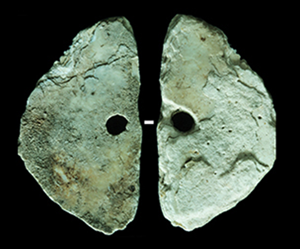Article contents
Archaeology of the Waiat mysteries on Woeydhul Island in Western Torres Strait
Published online by Cambridge University Press: 22 April 2021
Abstract

Secret societies, involving restricted and hierarchically organised initiation rituals, are conspicuous in the chronicles of many past and present societies. These rarely leave a substantial written record and yet archaeology can provide vivid insight into past performances, for example in relation to Roman ‘mystery cults’. Far less research, however, has focused on Australia and the Pacific Islands. This article presents archaeological evidence for ceremonies practised on Woeydhul Island in the Western Torres Strait, exploring initiation rituals at the cusp of contemporary memory. By doing so, it provides a detailed and long-term history for Torres Strait Islander secret societies and ritual activities involving dugong bone mounds, stone arrangements and worked stingray spines.
- Type
- Research Article
- Information
- Copyright
- Copyright © The Author(s), 2021. Published by Cambridge University Press on behalf of Antiquity Publications Ltd.
References
- 5
- Cited by


